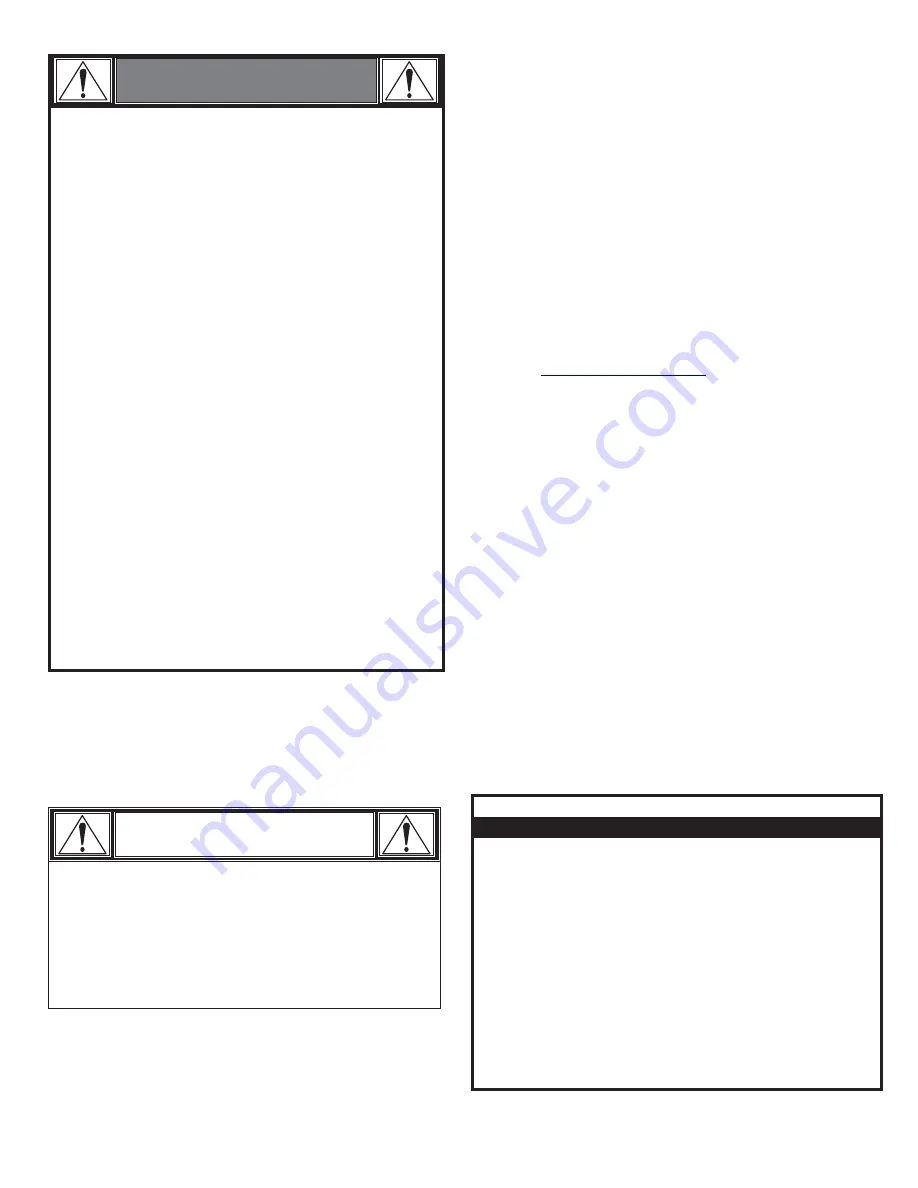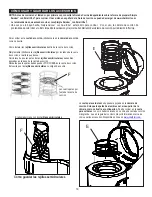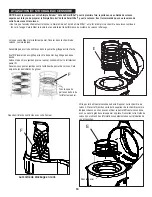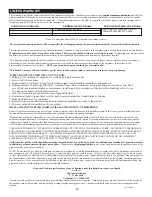
5
WARNING
CAUTION
• Putting out grease fires by closing the lid is not
possible. This a
ppliance is
well ventilated for safety
reasons.
• Do not leave
appliance
unattended while burning
off food residue. If
appliance
has not been regularly
cleaned, a grease fire can occur that may damage
the product.
For Safe Use of Your appliance and to Avoid Serious
Injury:
•
The use of alcohol, prescription or non-prescription
drugs may impair the consumer's ability to properly
assemble or safely operate the appliance.
•
When cooking, the appliance must be on a level, stable
surface in an area clear of combustible material.
•
Keep children and pets away from the appliance at all
times.
•
Do not move the appliance when in use.
•
This appliance is not intended for and should never be
used as a heater.
•
This appliance will be hot during and after use. Ideally,
use the lifting tool supplied with your smoker to lift the
cooking basket from the unit. Alternately, use insulated
oven mitts or gloves and long-handled barbecue utensils
for protection from hot surfaces or splatter from cooking
liquids.
•
Keep appliance area clear and free from materials that
burn.
•
Keep appliance area clear and free from combustible
materials, gasoline and other flammable vapors and
liquids.
•
Use
only in well-ventilated space.
appliance
How To Tell If Meat Is Cooked Thoroughly
•
Meat and poultry cooked in the appliance often browns very
fast on the outside. Use only thawed meat and a meat
thermometer to be sure food has reached a safe internal
temperature, and cut into food to check for visual signs of
doneness.
•
We recommend food to be at least 40°F before cooking in your
appliance.
•
Whole poultry should reach 165° F. Juices should run clear
and flesh should not be pink.
•
Beef, veal and lamb steaks, roasts and pork chops can be
cooked to 160° F.
•
NEVER partially cook meat or poultry and finish cooking later.
Cook food completely to destroy harmful bacteria.
•
Use a meat thermometer to ensure proper internal food
temperatures.
Food Safety
Food safety is a very important part of enjoying the outdoor
cooking experience. To keep food safe from harmful bacteria,
follow these four basic steps:
Clean:
Wash hands, utensils, and surfaces with hot soapy water
before and after handling raw meat and poultry.
Separate:
Separate raw meats and poultry from ready-to-eat
foods to avoid cross contamination. Use a clean platter and
utensils when removing cooked foods.
Cook:
Cook meat and poultry thoroughly to kill bacteria. Use a
thermometer to ensure proper internal food temperatures.
Chill:
Refrigerate prepared foods and leftovers promptly.
For more information call: USDA Meat and Poultry Hotline at
1-888-MPHOTLINE (888-674-6854) In Washington, DC
Or E-mail:
Or visit the USDA website at www.fsis.usda.gov
Ground Meat
Beef, Pork, Veal, Lamb......................................160°F
Turkey, Chicken.................................................165°F
Fresh Beef, Veal, Lamb
Medium Rare.......................................................145°F
(let stand 3 minutes before cutting)
Medium................................................................160°F
Well Done............................................................170°F
Poultry
Chicken & Turkey, whole.....................................165°F
Poultry Parts.......................................................165°F
Duck & Goose....................................................165°F
Fresh Pork
Medium Rare......................................................145°F
(let stand 3 minutes before cutting)
Medium..............................................................160°F
Well Done..........................................................170°F
Internal Cooking Temperatures
USDA Recommended
• Apartment Dwellers:
Check with management to learn the requirements
and fire codes for using an electric grill in your
apartment complex. Use only as allowed.






































